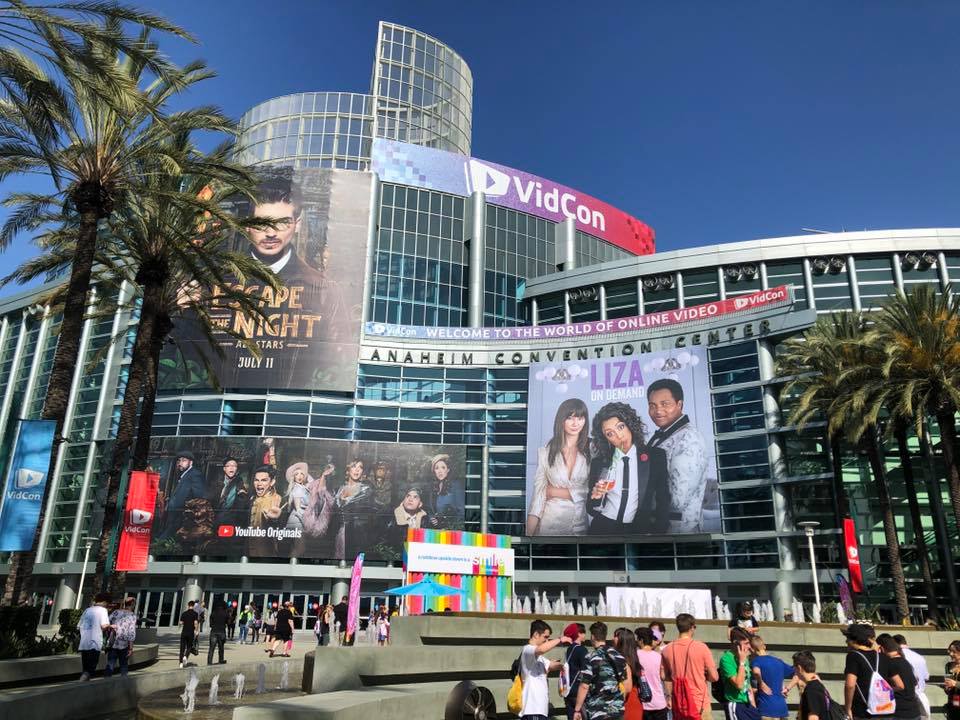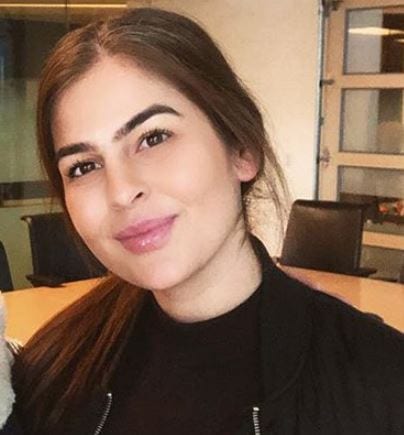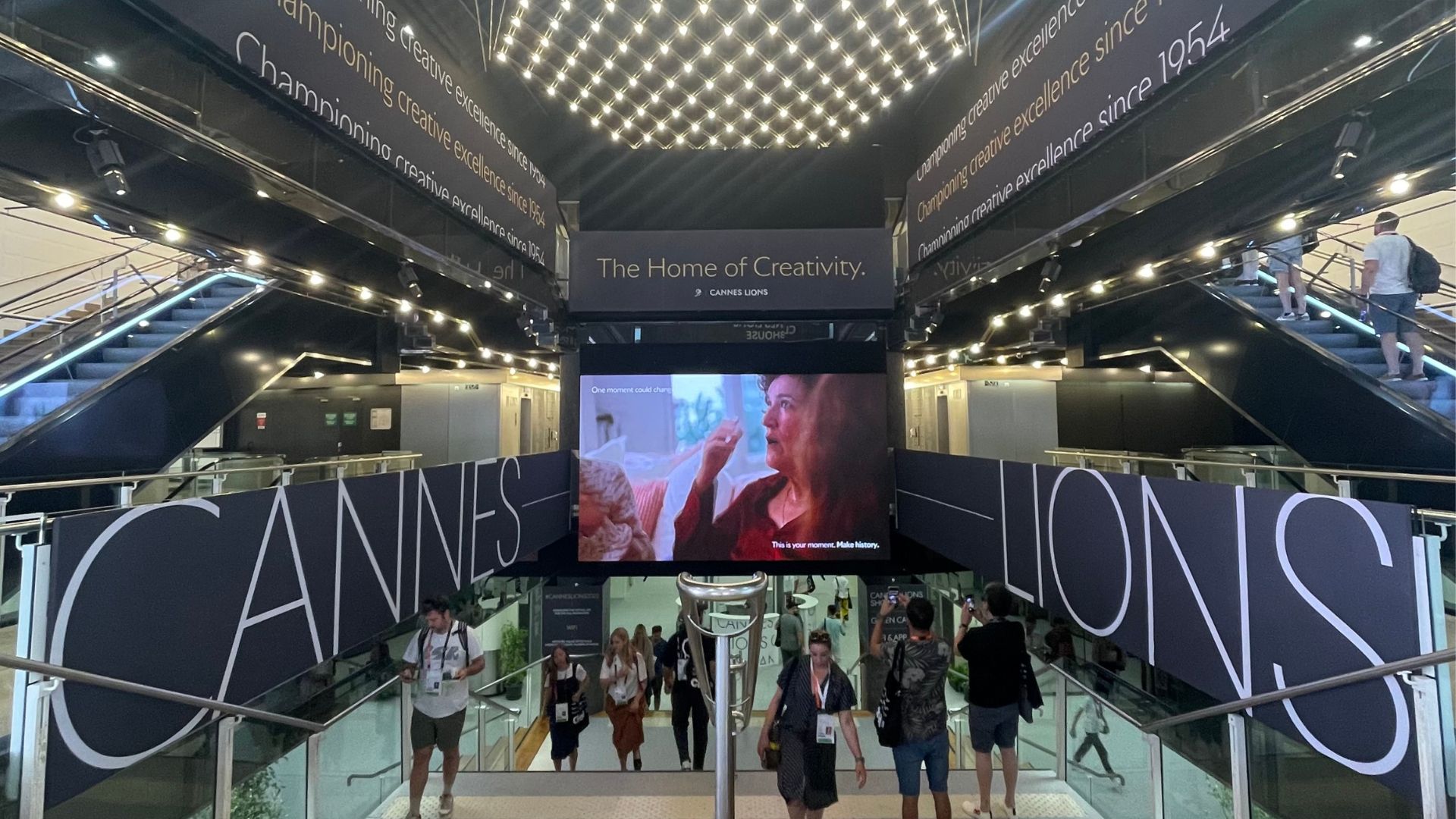What started in 2010 as small online video conference with 1,400 attendees has quickly turned in to a global phenomenon. VidCon US, VidCon Australia and VidCon London are now arguably the world’s largest event for fans, creators, brands, and executives to come together as a community and build on their passion for digital video content creation.

For those unfamiliar with VidCon, it’s helpful to think of it as three conferences happening within one – each catering to a specific interest under the larger umbrella of the online video community. There are three types of passes, or “tracks”, available for attendees:
- Community Track: think of this as the track for fans. It grants you access to the main floor of the convention center, access to several stages, the signing photo hall, the Expo hall, and other special community events
- Creator Track: this is geared more toward members of the online community who produce content themselves. This track gives access to the main and second floor of the venue, the creator lounge, creator focused panels, workshops and keynotes that focus on the specifics of creating online content
- Industry Track: the track geared toward industry professionals such as managers, agents, brands, and agencies executing influencer campaigns like Ketchum. This track allows individuals to attend all VidCon events, the industry lounge and keynotes, round-table discussions and hands on trainings on a wide variety of industry related topics
With over 26,000 attendees, hundreds of sessions and 280+ featured creators there is a lot to take in at VidCon. Below are the top three takeaways observed while onsite and there potential implications for the future of influencer marketing.
YouTube is no longer the king of video content:
The history of VidCon has deep roots in YouTube, with its two founders being YouTube influencers Hank and John Green. YouTube had a strong presence at the conference, not only as a main sponsor but also with various sessions focused on topics impacting the YouTube community. However, there was a heavy focus on Instagram, particularly Instagram videos and IGTV and the future of video creation on the platform. New-school player TikTok was also a hot topic as it continues its meteoric rise, having already captured the attention (or lack there of?) of an entire generation—many brand marketers are still struggling to figure it out.
IGTV has been around for about a year, and within that year Instagram has slowly integrated IGTV elements in to the everyday user experience. It was originally conceived because Instagram noticed people wanted more than what they could see on their feed, and they didn’t want people to have to click out of the platform to watch a full video (in other words, they did not want consumers to leave and go to YouTube). You can now watch IGTV videos within your regular newsfeed, making it a seamless user experience to watch long form videos on Instagram. Instagram executives at VidCon also discussed rolling out monetization for creators, which they cited as a main priority this year. This will undoubtedly increase the amount of IGTV videos created and could potentially cause influencers to ditch their YouTube channels and house everything in one platform.
TikTok on the other hand, is focused on short 15 second video clips that are often described as silly, unedited and weird. It’s a platform that is focused on being authentic instead of perfectly curated and it has won over the hearts of Gen Z with roughly 500 million users around the world. Some argued that it appeals to Gen Z so heavily because it requires such a short attention span, while others argued that Gen Z is craving authenticity over manufactured content. But one thing everyone agrees on when it comes to TikTok is that brands are struggling to figure out how to properly activate on the platform. In fact, almost every single TikTok related panel at VidCon was standing room only and some were so crowded you couldn’t even get in.
As proof of concept, a social media manager from a prominent fast food brand discussed a recent case study where they enlisted the help of an influencer and played on one of TikTok’s biggest trends—challenges—to create to create a wildly successful campaign. It called for users to participate in the challenge by creating their own response videos labeled with the designated hashtag, which—you guessed it—required them to go buy said fast food. As of June 2019, the campaign has more than 230 million views and received more than 110,000 video submissions. Proving, if brands can naturally integrate themselves in to the culture of the new platform fans are willing to engage.
Live experiences are just as powerful online:
Many platforms have tried to harness the power of shared experiences via a live aspect of their platform, such as Instagram Live, but it’s rarely utilized by users. Twitch, however, is seeing tremendous success in their live streaming platform and have 3 million+ content creators on the platform today. While gaming is at the core of Twitch, they recognize that their audience has other interests and passion points such as anime, Sci-Fi, sports, current events and politics.
Michael Aragon, Senior VP of Content at Twitch, spoke in an intimate Twitch fireside chat on how Twitch is harnessing these adjacent vertical interests to expand the platform. They’ve hired entire divisions of teams to start focusing on content creation that falls within these other passion points. Twitch cited that co-creation happens on the platform in ways that it can’t on any other platform, so they’re looking to develop this new content in collaboration with the Twitch community to ensure it becomes adoptable.
Another big avenue Twitch is doubling down on is news and politics. They’ve seen an increase in political content and even politicians like AOC and Bernie Sanders have appeared live on the platform. An audience member asked how they felt about a politician like Bernie Sanders having an account on Twitch. Michael was very positive about it, citing that sharing moments is a core part of the Twitch platform, and politicians utilizing live experiences to connect with the community in an accessible way is something they want to see more of.
Influencers hold an enormous amount of star-power:
It’s not news that influencer marketing is one of the fastest growing industries and that the pool of influencers continues to expand. Something not everyone realizes though is the truly remarkable star power some of these influencers possess. Onsite, it was common to see a teenager break down in tears because their favorite influencer had just walked by. The lines for the meet and greets were somewhat mob-like at times. Creator hotels were on security lockdown to prevent fans from stalking them in their rooms (it’s happened before).
Many people on the Community track traveled far and wide to spend a few minutes with their favorite influencer. Big name influencers, and their teams, realize this and are starting to become highly selective about the types of brand partnerships they’ll accept. Over and over, a common theme was that influencers want to move away from one-off brand deals and want either long-term deals or to be part of 360 campaigns that extend beyond a social post. Some have decided to forgo certain brand categories altogether and create their own lines, which almost always sell out. The Expo hall floor was flooded with creator merch, but beyond merch lines influencers are getting into clothing, school supplies, makeup, home décor, and more. Influencer LaurDIY spoke on a panel about the extremely successful line of products she’s created that range from merch, to crafting kits and jewelry, even bedding. A lot of these items are available in major national retailers. It’s easy for Lauren to organically promote her own line of products, leaving her the ability to be highly selective about brand deals and what she chooses to promote across her channels. Influencers are beginning to recognize the power they have to drive consumers to purchase and are becoming selective about what brands they give that power to.
All in all, VidCon 2019 was another successful year for a conference that will likely continue to gain traction. What started as a small convention in the ballroom of a hotel, has turned in to a global phenomenon. The growth of VidCon parallels the growth of the influencer marketing industry, and with so many new platforms and content creators on the horizon, there are no signs of it slowing down anytime soon.



